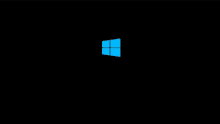

From here on out, when I say VHD, you can interchange VHDX. Pay attention to the differences between a VHD and a VHDX. To do that, use a technician computer to create a VHD by opening Disk Management, clicking Action in the toolbar, then “Create VHD”. Capturing the WIM with WinPE is outside the scope of this article, but there are many good TechNet blogs out there that describe this process in detail.Īfter you have your WIM, you can apply it to a VHD. After the machine as shut down, capture a WIM using WinPE. Once configured, run your sysprep command with the same parameters mentioned above (“/generalize /oobe /shutdown”). To that, install Windows on the machine and configure it. Here, you can capture the physical machine or VM as a WIM and then apply it to an empty VHD. Second, you can create your base image on a physical machine or from another virtualization product such as VMware. You can also use an answer file, just as you would any other deployment.

When you power the machine up the first time, the VHD will run through OOBE and you can configure it. When you get done, sysprep the image using the “/generalize /oobe /shutdown” parameters and just copy the resulting VHD to computers using the process that I will describe a little later. First, you can install Hyper-V and create your base image from there. To create a deployable image, you must have a VHD.

If you do not know how to create one, see this TechNet article: (just the first two sections – “Install the Windows ADK” and “Install Windows PE to DVD, a CD, or an ISO file”). The base hardware should be the same between the reference VHD and the deployed VHD, meaning that if you build your reference on Intel-based hardware, the deployed hardware will need to be Intel. Windows 7 VHD Native Boot only works with a BIOS configuration, not UEFI. Finally, in Part 4 we will talk about differencing disks, where you lay down a base VHD, then all changes are made on another VHD that can either be kept or discarded at reboot. In Part 3, we will talk about deploying this VHD from ConfigMgr. In part 2, we will talk about Native Boot for Windows 8.1 and Windows 10 (UEFI-based).

In this part, we will go over the basics of Windows 7 Native Boot (BIOS-based) and deploy it using WinPE. Microsoft calls this process VHD for Native Boot. It will only have a VHD, and the machine will boot from this VHD. This process will make it so your computer no longer has an installed version of Windows on it. We will be looking at booting your computer from a VHD.


 0 kommentar(er)
0 kommentar(er)
